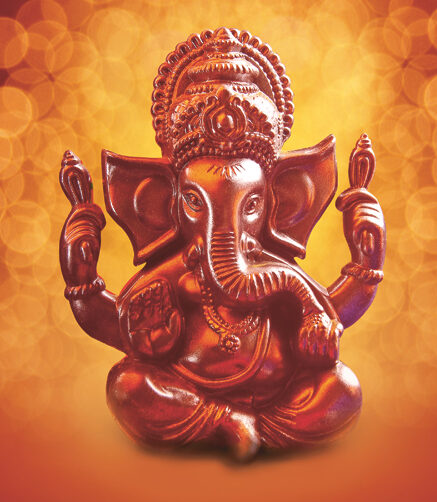
Hidden Treasures of the East
Ganesha - The remover of obstacles
Ganesha is always seen with an elephant head and a round potbelly. Perhaps the most popular worshipped deity from the East (also known as Ganapati), is widely known as the remover of obstacles; showering prosperity and success in abundance. The Patron of Arts and Sciences, he opens doors to new beginnings; famously known as a powerful guide navigating us through situations where obstacles prevent us from obtaining success, or when we need to channel wisdom, self-belief and faith to make those big decisions in life. Traditionally, before any festivities, rituals, journey or teachings, the Ganesha bija (seed) mantra is chanted to bring protection, luck and power and remove any potential ‘obstacles’ that may lie ahead.
“Om Gum Gunapataye Namah” – I offer my obeisances to Lord Ganesha – Ganesha Mantra
Legend
Ganesha, the son of Shiva and Shakti, was created from Shakti’s energy during a time of intense loneliness while Shiva was meditating in the caves for thousands of years; a creation from sandalwood, turmeric and the energy of her third eye. Once Ganesha was guarding the entrance to her house, Shiva returned, enraged this stranger was refusing to let him pass, desperate to be reunited with Shakti, he cut off Ganesha’s head. Shakti, struck with inconsolable grief, demanded Shiva to bring their son to life. He vowed to restore Ganesha with the first thing he saw, giving him an elephant head and declared that Ganesha would be worshipped first and foremost for his fierce loyalty.
Symbolism
Ganesha holds various objects in his four hands symbolising how he can help us progress throughout life.
In one hand he shows a mudra of protection and blessing, In the second hand, he holds sweets, which represent rewards for spiritual development. Another hand holds an axe, to cut attachments with the impermanent and material world and in the fourth hand he holds a rope, representing energy to curb the ego and guide us towards the ultimate goal of self-realisation and liberation.
His potbelly signifies the expansiveness of nature whilst the large head represents wisdom and intelligence. His broken tusk, symbolic of retaining the good and discarding that which we do not need.
Ganesha Mudra
The Ganesha mudra (hand gesture/seal to focus the mind or energy) represents strength (for the physical heart and heart chakra) and
power. The position of the fingers locked together in fists in front of the chest with the elbows wide, gives protection and boosts confidence. Practicing the mudra and chanting the mantra can create space and clear the way to attract and manifest the positive things we want more of in our lives.
Festival
The appearance day of Ganesha is known as the Chaturthi festival and lasts for 10 days in the East. His energy is felt through elaborate venerations and paraphernalia offerings bringing good fortune personally and professionally. This festival is also known to activate the Third Eye chakra; intuition, wisdom and self-awareness. This year the festival starts on Monday 2nd September.

By Sonal Thakrar (kleem.co.uk)




